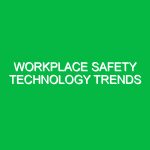Introduction
In today’s fast-paced and increasingly complex work environments, the importance of robust Safety Culture Improvement Programs cannot be overstated. These programs are designed to foster a culture of safety within organizations, particularly in sectors where health, safety, and environmental (HSE) concerns are paramount. A strong safety culture not only protects employees but also drives organizational efficiency and compliance with regulations. By embedding safety into the core values of an organization, companies can significantly reduce workplace incidents, enhance morale, and promote a sense of responsibility among all employees.
Understanding Safety Culture Improvement Programs
Safety Culture Improvement Programs aim to shift the organizational mindset towards prioritizing safety in all operations. This involves identifying and addressing the underlying beliefs, perceptions, and attitudes that shape safety behaviors. The effectiveness of these programs hinges on leadership commitment, employee engagement, and continuous improvement. Well-implemented programs can lead to a transformative change in how safety is perceived and practiced, ultimately resulting in a safer workplace.
Importance in HSE
Safety Culture Improvement Programs play a critical role in the HSE domain. They help organizations comply with industry regulations, reduce risks, and ensure the well-being of employees. A strong safety culture can lead to fewer accidents, reduced insurance costs, and improved organizational reputation. Furthermore, engaging employees in safety initiatives fosters a sense of ownership and accountability, encouraging proactive behavior rather than reactive responses to incidents.
Identifying Hazards and Risks
Understanding the potential hazards and risks associated with Safety Culture Improvement Programs is essential for their successful implementation. Hazards can arise from various sources, including physical, chemical, ergonomic, and psychosocial factors. Each type of hazard requires a tailored approach to effectively mitigate risks.
Physical Hazards
Physical hazards are the most visible risks in any workplace. These include slips, trips, falls, machinery accidents, and exposure to hazardous materials. For instance, in a manufacturing setting, an employee might risk injury from unguarded machinery or cluttered walkways. Recognizing these risks is the first step in creating effective safety protocols. Regular safety audits and employee training can help identify and address physical hazards.
Chemical Hazards
Chemical hazards pose significant risks, particularly in industries such as construction and manufacturing. Exposure to toxic substances can lead to serious health issues. Organizations must comply with regulations such as the Occupational Safety and Health Administration (OSHA) standards regarding hazardous materials. Implementing proper labeling, storage, and handling procedures is crucial for minimizing these risks.
Ergonomic Hazards
Ergonomic hazards often arise from poor workplace design, leading to musculoskeletal disorders. For example, repetitive movements or awkward postures can cause long-term health issues. Conducting ergonomic assessments and providing employees with the right tools and training can mitigate these risks effectively.
Psychosocial Hazards
Psychosocial hazards, including stress, harassment, and workplace violence, can greatly affect employee well-being. Fostering an open and supportive workplace culture is key to addressing these issues. Implementing programs that promote mental health awareness and encourage communication can help reduce psychosocial risks.
Best Practices for Safety Culture Improvement Programs
Implementing Best Practices is vital for the effectiveness of Safety Culture Improvement Programs. Here are some actionable strategies:
Leadership Commitment
Leadership plays a crucial role in shaping an organization’s safety culture. Leaders must demonstrate their commitment to safety through actions, not just words. This includes allocating resources for safety training, participating in safety meetings, and visibly supporting safety initiatives. When employees see their leaders prioritizing safety, they are more likely to adopt similar attitudes.
Employee Engagement
Engaging employees at all levels is essential for a successful safety culture. Organizations can do this by involving employees in safety committees, encouraging feedback on safety practices, and recognizing those who contribute to safety improvements. A personal anecdote comes to mind from a construction firm where safety was transformed when workers were invited to share their insights. The company saw a notable reduction in incidents as employees felt empowered and valued.
Continuous Training and Education
Ongoing training is fundamental to maintaining a strong safety culture. Regularly scheduled training sessions ensure that employees are aware of current safety protocols and any changes in regulations. Incorporating real-life scenarios and role-playing exercises can make these sessions more engaging and effective.
Clear Communication
Effective communication is critical in conveying safety expectations and procedures. Organizations should establish clear channels for reporting hazards and incidents, as well as for sharing safety information. Encouraging open dialogue about safety concerns can help identify potential issues before they escalate.
Incident Reporting and Analysis
Encouraging a no-blame approach to incident reporting can lead to more accurate data collection and analysis. Organizations should create a system where employees feel safe reporting near-misses and unsafe conditions. Analyzing incidents – both minor and major – can provide valuable insights into safety culture and help identify areas for improvement.
Regulations and Standards Governing Safety Culture Improvement Programs
Safety Culture Improvement Programs must operate within the framework of various regulations and standards. Compliance with these guidelines not only helps protect employees but also reduces liability for organizations. Key regulations include:
Occupational Safety and Health Administration (OSHA) Standards
OSHA sets forth regulations that all employers must follow to ensure workplace safety. These standards cover various aspects of health and safety, including training, hazard communication, and record-keeping. Adhering to OSHA standards is not just legally required; it also signifies an organization’s commitment to employee safety.
ISO 45001
The ISO 45001 standard provides a framework for organizations to manage occupational health and safety risks. This international standard emphasizes the importance of continuous improvement in safety practices and encourages organizations to proactively address potential hazards.
National Fire Protection Association (NFPA) Codes
In industries where fire hazards are a concern, compliance with NFPA codes is essential. These codes provide guidelines for fire prevention, safety equipment, and emergency planning, helping organizations mitigate fire-related risks effectively.
Conclusion
Safety Culture Improvement Programs are a vital component of the Health, Safety, and Environment domain. By fostering a culture that prioritizes safety, organizations can significantly reduce risks and enhance overall workplace well-being. Addressing potential hazards, engaging employees, and adhering to regulations are essential steps in creating a robust safety culture. In the end, the goal is not just compliance but a genuine commitment to safeguarding the health and safety of every employee. As the landscape of work continues to evolve, so too should our approaches to safety, ensuring that it remains at the forefront of organizational values.


